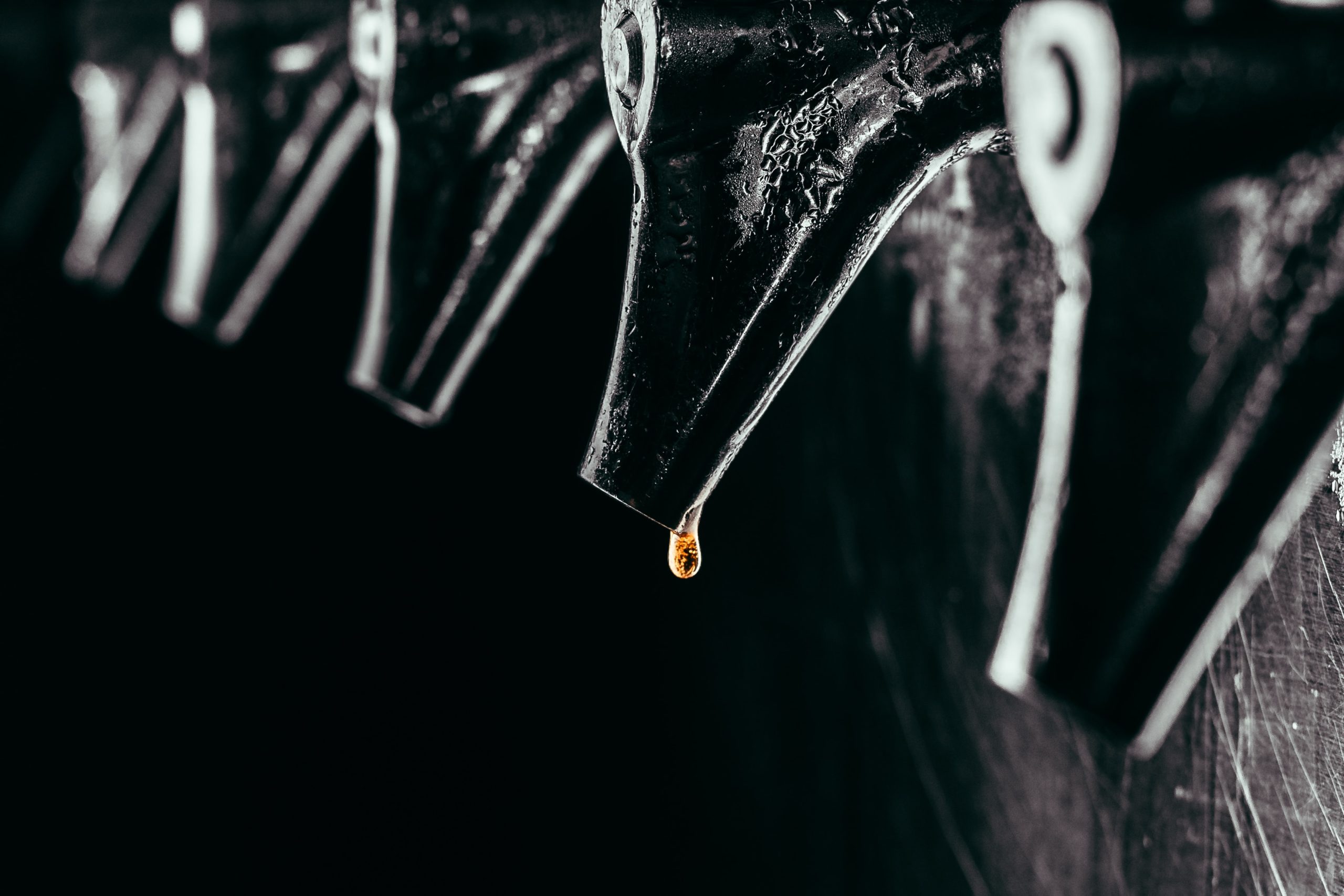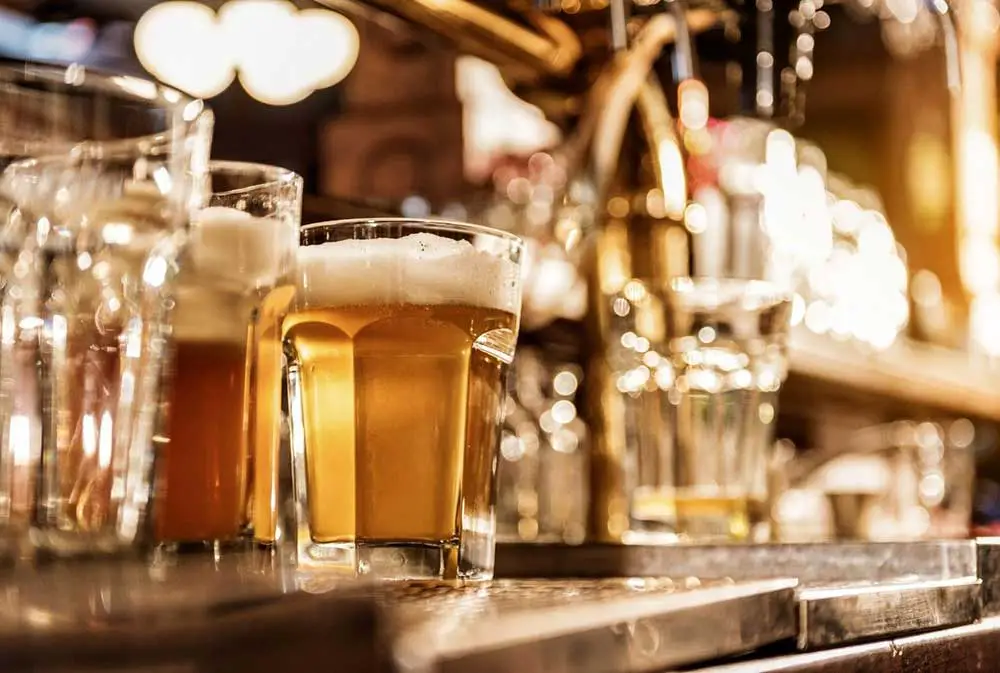Drinking good beer in a welcoming atmosphere might be more than a few people’s definition of perfection. While good beer is good beer anywhere, it can become a great beer when enjoyed in the right place. Which is part of the reason why breweries open taprooms.
Taprooms are almost like bars attached to breweries, but things are a little more complicated than that. Which is why there’s still discussion around what a good taproom should be. We all have our own idea of what makes the perfect atmosphere.

BEER DROP: Boxes of beer from Award-winning microbreweries → Join The Club
What a taproom is and what a taproom isn’t is more than up for discussion. A taproom isn’t a bar, because it should encompass much more than that. Taprooms are places of discovery and community, and it’s time to open up a conversation on how we create that.
What exactly is a taproom?
Put simply, a taproom is the place in a brewery where the beer is served. In many cases, the taproom is actually inside the brewery. In other places, it may be a building attached. Sometimes, a brewery will build a taproom in a town away from the brewery, so they can directly get their beer to customers.
A taproom will have a bar, which is where the beer is served. Customers expect a certain degree of knowledge in a taproom. They expect the server to be able to guide their choice, make recommendations, and explain the different options to them. In a taproom, craft beer is the priority, and people are eager to learn.
Because a taproom doesn’t often have a traditional set up, there will generally be an extensive range of seating available. This is to attract all kinds of potential customers. Seating outdoors and indoors is often expected.
Food and entertainment aren’t necessary to a taproom, but they do help to enhance the whole experience. A taproom may have a dedicated music night, a selection of board games, a pool table, or other options that encourage conversation and build an atmosphere. Simple food both draws customers in, and keeps them around longer.
Taprooms often have a community feel, and they can be a great place to host classes and events.
The differences between a taproom and a bar
A bar is a place where drinks and alcohol are served. There tends to be a fairly significant range of drinks on offer, and customers are likely to know what they want. A customer at a bar is often looking to get a little loose, and have a good time.
There are some really great bars out there. Places that have managed to build an atmosphere, with knowledgeable staff, and a fantastic selection of drinks.
And then there are the other kinds. The kinds that always seem to be dark, none of the servers know what anything is, and a general air of solitude hangs over the place. We’ve all had more than a few bad experiences in bars like this.
The first thing that sets a taproom apart is knowledge. When you go into a taproom, you expect to be able to learn about the beer. How it tastes, where it came from, and what choice might be right for you. Although you can get this in a bar, more often than not servers will just list what’s for sale.
The second thing that sets a taproom apart is the atmosphere. Taprooms aren’t so much about drinking as they are about coming together and sharing the experience.
Beer is obviously a part of the experience at a taproom. But that’s the difference: taprooms are about beer, and bars are about drinking.
Community and the taproom
Taprooms are a space community, and they’re the kind of place you want to spend hours in. A taproom can be a place to hold meetings, host groups, or even throw birthday parties. The atmosphere is so welcoming that it really feels like a community building, rather than just a business.
A taproom should be a place that people of every age can go to – which you don’t tend to get in a bar. Kids will be happy enjoying the entertainment and family friendly feel, and the elderly will feel welcomed and catered to.
Taprooms can also be a place for pets – although you probably only want this if there’s an outdoor area. This can be a great way to attract a different daytime crowd.
When you’ve been to a good taproom, you’re excited to introduce everyone else to it.
What makes the perfect taproom?

There’s obviously no definitive answer to what makes the perfect taproom, because everyone will have a different idea. That said, there are a few things that every good taproom needs.
What the best taproom will have in excess is enthusiasm. They’re enthused to make the beer, to craft that exact balance of flavor that makes the product unique. They’re excited to share that craft with you, so you can taste what they’ve been working towards. This is what gives the taproom its personality.
And this welcoming enthusiasm goes out to any customer of a taproom. It isn’t reserved just for the big spenders, or the people who are there all the time. Every person who comes into a taproom should become an immediate part of the community.
A welcoming space
Most of us probably turn away from taking children to bars. While some can be family friendly, most bars are so focused on drinking that there isn’t much to interest kids. And many children will feel uncomfortable surrounded by adults who are a little worse for wear.
A taproom, on the other hand, should be a space for families. However, they may want to restrict the hours that kids are allowed in. It’s reasonable to say that after 9pm, no one under the age of 21 can enter the taproom. This should be enough to keep everyone happy.
But this welcoming atmosphere isn’t just about families: it’s about the community. The best taproom will host events that are targeted towards different ages.
Many times, the elderly will feel excluded from bars, but they’re still interested in getting out. Taprooms can give them a fun meeting space.
Because taprooms are centered around local breweries, local events should be a big part of the focus. A taproom should try and host events at least once a month, with different things for a variety of demographics. Over time, a taproom can become an essential part of the community.
Design
Design and layout is pretty important in a taproom, but they’re often hindered by the space that’s available. If a taproom is set up in a brewery, then the exact layout depends on what’s already there.
One thing that often sets taprooms apart from bars is this fundamental layout. Bars can be dark and enclosed, but taprooms should feel open and light. There should be lots of places to sit, so everyone can feel comfortable.
The actual bar itself, the place where you order your drinks, needs a clear layout. At a taproom, customers want to be able to learn about the beer, not just shout an order and go.
We’ve probably all been to a bar where you have to elbow your way to the front, yell what drink you want, and move away as soon as you’ve been served. Taprooms are different. Rather than a quick order, customers at a taproom want recommendations and explanations.
A long bar is best, but obviously space can be prohibitive. Be sure to set up points to order, with clear signage. This kind of orderly system just gives everyone a chance to take their time with a decision, which is part of why taprooms feel so friendly.
Another way taprooms can build this friendly atmosphere is by having many seating options. Bar stools are pretty much a must, but there should also be ample tables. Some tables should be big, so large groups can fit around. Others should be smaller, for private conversations and catch-ups.
Outdoor seating is something that would be a must, only it isn’t always possible. However, if there is space for outdoor seating, it should absolutely be utilized. One of the perfect accompaniments for a glass of craft beer is sunshine.
For taprooms with outdoor space, a covered and uncovered area is the best of both worlds.
Food
Food isn’t necessary to a taproom, but it does improve it. Picture this: you’re sitting in the sunshine, enjoying a good glass of craft beer. Inevitably, your stomach starts to rumble. Someone brings you a basket of fries, and you’re happy to sit for another few hours.
Serving food also makes the taproom into a rounded experience. It really helps to build that community vibe, because people can sit longer, share snacks, and it brings in families.
Honestly, food doesn’t have to be difficult. Salty french fries, plates of nachos smothered in cheese, or a simple grill are all that’s needed. What people want from a taproom is comforting food that can support the beer, not anything that will be fighting for attention.
Cooking and brewing are fairly different skill sets, so it’s understandable that not every taproom will want a kitchen. However, adding just a few food options really takes a taproom to the next level. Consider hiring a food truck, or renting out space to a chef.
If you want to keep it a smaller operation, maybe install a barbecue or grill. They’re easy to use, and you can offer a decent sized menu without extra effort. If you fancy something a bit different, look into a pizza oven. Making pizza doesn’t have to be difficult once you’ve got the basics sorted.
Good food and good beer go together like, well, food and beer. A couple of solid food choices can really enhance a taproom.
Creating entertainment
Now, most of us can agree that a perfectly brewed craft beer can be all the entertainment that a taproom needs. But, sometimes a little more is welcome. Especially if you’re trying to create a community atmosphere.
The most obvious entertainment is live music. Local musicians are a great way to, again, build a community. They can also draw in people who may not otherwise have come to the taproom. Taprooms and local artists form a kind of symbiotic relationship – the taproom brings a new audience to the band, and the band brings new customers to the taproom.
If you are going to have live music, make sure there’s a separate space for it. We’ve all had the frustrating experience of an interesting conversation being interrupted by the clattering sounds of loud music.
Give people a place to sit where the music doesn’t have to be the sole focus. Also, keep things quiet around the bar area. People in taprooms want to learn about the beer, and that can’t happen if you have to shout tasting notes over guitar playing.
Board games are perfect for taprooms, as they bring people together. A good mixture of the classic and the new is best. Have a look in thrift stores to see if you can find some unusual options. If you can afford it, arcade games are another solid option.
Don’t forget the bar classic: a pool table.
Final Thoughts
Bars are part of a taproom, but a taproom isn’t what we think of as a bar. A taproom is a place that welcomes people of all ages, and forms a community meeting place. And yes, they also sell some pretty fantastic craft beer.
Exactly what makes the ideal taproom will change from person to person. The things that I see as essential, others see as nuisances. The importance of entertainment, food, layout, and community are all subjective matters. It’s impossible for a taproom to be just right for everyone.
More and more breweries are beginning to understand the potential a taproom can have, which means they’re opening up all the time. And with each new taproom comes a new and unique personality. If you haven’t found one that’s right for you just yet, the perfect taproom is sure to be just around the corner.
When a taproom establishes itself, the most important thing to do is build this personality. Be clear about whether children are allowed in, the kind of events that will be held, and setting these expectations.
Taprooms aren’t bars, because they offer so much more than a bar does. A taproom is a community place for everyone within that community. From food, to entertainment, to even the ordering process itself – a taproom has a personality filled with care.
